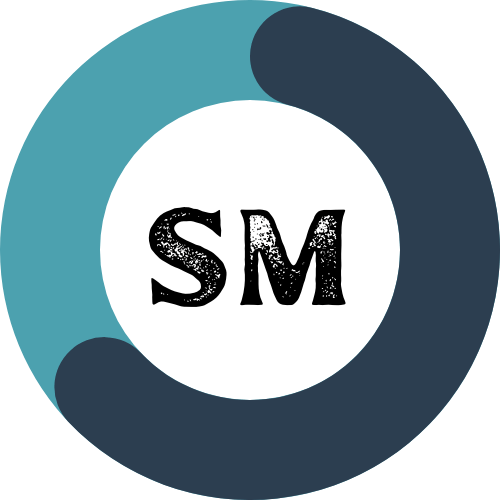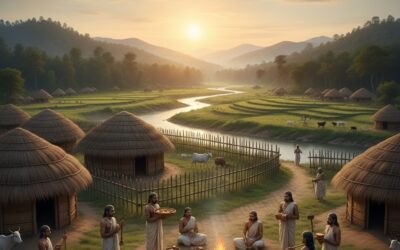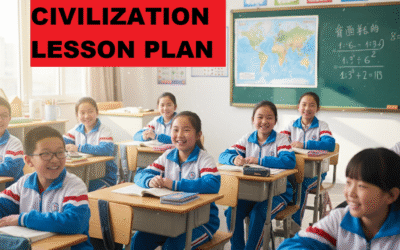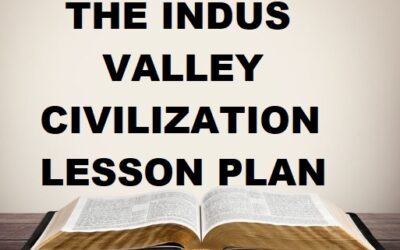Class 6 History – Timeline and Sources of History Lesson Plan
Timeline and Sources of History Lesson Plan is an essential tool for teachers. The lesson plan enables teachers to systematically approach introducing new ideas. Students will understand complex ideas, while making learning enjoyable and relevant. Teachers will be able to share these interesting teaching interpretative aids and activities. This will enable the students to help develop their interest in ideas of the past and develop students questioning skills. When students understand how historians record and interpret history, students understand different types of sources and the importance of evidence. This lesson plan will support a teacher to be able to present potentially new content to their students with confidence. Students can understand the importance of history and how it can inform their understanding of their present situation and its possibilities for their future experiences.
Bridging Disciplines: Integrating STEM into Social Science Classrooms
Class 6 History – Timeline and Sources of History Lesson Plan
Subject: History
Class: 6
Chapter: Timeline and Sources of History
Duration: 45 minutes
Teaching Aids: Textbook, chalkboard, timeline chart, flashcards/images of coins, tools, inscriptions, digital presentation (if available)
1. Learning Objectives:
At the end of the lesson, students will be able to:
Define a timeline and understand its significance in history.
I. Define BCE, CE, and century.
2. Identify various sources of history (manuscripts and inscriptions, coins, tools and other objects).
3. Differentiate between primary and secondary sources.
4. Understand the importance of these sources when reconstructing the past.
2. Learning Outcomes
At the end of the lesson students will be able to:
- Draw and discuss (describe, explain) a basic timeline with historical or personal events.
- List and categorize at least
3 Types of Historical Sources with examples.
- Differentiate between primary and secondary sources.
- Explain how a single source (for example, a coin or inscription) reveals something about the past.
- Use historical terminology (e.g. timeline, source, BCE/CE); and participate in class discussion and/or writing activity.
Introduction (5 minutes)
Start with a question:
“How do we know what happened 1000 years ago?“
Allow students to give their thoughts.
Guide the discussion towards sources generating recorded history.
Indicate the topic and why it is important:
“Today we will learn about how historians measure time and how they gather information from different sources in order to build a picture of the past.“
4. Presentation / Explanation (20 minutes)
Part 1: Timeline Define a timeline – as a method of representing historical events in the order in which they took place.
Part 2: Sources of History Defining Historical Sources: any item that provides evidence of the past.
You are going to be discussing two parts:
Primary sources – these are original items (ex. coins, tools, stones with writings)
Secondary sources – these are ways other people have examined or interpreted them (ex. books, articles).
You are then going to show some images or flashcards to explain to pupils what the following items are:
Manuscripts – The writing, either on palm leaves or paper. Inscriptions – A piece of writing that is marked into rock or metal.
Coins – Events, rulers, and economy. Pottery and Tools – Life and skill of an ancient people‘s people.
5. Class activities (10 mins)
Activity 1: Match the source:
Match the pictures of the sources to their source type and include one thing that they tell us.
Steps to carry out the activity:
1. Introduction (2–3 minutes): Start by reviewing the different types of historical sources.
Show a few examples and ask students what they think the source is and what they think it might tell us.
2. Instructions (2 minutes): Explain to students:
“You will look at pictures of historical sources. Your job will be to match the picture with the correct source type – that could be,
coin, inscription, or manuscript, and write down one piece of information this source tells us about the past.”
3. Distribution (2 minutes): Hand out the worksheet (or images and blank charts) to every student or group (depending on the size of the class).
4. Activity (10 minutes): Students will: Look closely at each picture. Identify the source type (i.e. coin → primary source).
Write down what the source tells us, for example:
“Coin” → tells us about the king who ruled and the currency used.
“Manuscript” → tells us about religious beliefs or events famous at that time.
Tip: You may want to give a word bank or type list of sources for younger or weaker students to choose from.
5. Review and Discussion (5–7 minutes): As a class, review each picture. Ask a few student volunteers to share their answers. Correct misconceptions
and offer interesting facts along with each picture.
For example: Image of Ashokan Inscription: Source Type – Inscription, tells us – Ashoka followed Buddhism.
6. Extension / Optional Bonus Option:
Ask your students: “As a historian, if you found this object, what questions would you ask regarding it?“
Learning Outcomes of the Activity:
Students can see different historical sources visually.
They learn to categorize sources, and describe their importance.
It encourages them to observe, reason and think critically.
7. Assessment:
Collect worksheets to assess accuracy. –
Give marks or stars for a correct match, or provide thoughtful responses.
Community-Based Instruction: “Empowering Students Through Real-World Learning”
Activity 2: Timeline of you!
Write 3–5 events in your life (ex. date of birth, first day of school) and put them on a timeline.
Personal Timeline
Instructions:
Think of 3 to 5 major events from your life... for example, your birthday, your first day of school, your first bicycle, or a big move.
Just write out each event with the year (or actual date if you remember).
Example:
2014 – I was born
2018 – I started school
2022 – I got my first bicycle Draw a straight horizontal line in your notebook or on the worksheet provided.
Then, mark your years on the timeline in order (left to right).
Then place each event above or below the correct year on the timeline.
You can embellish it if you like – make small drawings or symbols!
This is a fun activity for you to become familiar with timelines and understand the chronological arrangement of events (the order of events)
6. Recap / Summary (5 mins) Review:
What is a timeline?
Why do we use them?
Types and examples of sources. – The difference between a primary and secondary source.
Ask some quick oral quizzes: “What does the coin tell us about history?“
“What is the meaning of BCE?“
7. Homework / Extension activity
Option A: Create timeline of 5 important historical events in Indian history.
Option B: Interview an elder in your family about a past event. Write a short note explaining the importance of that event (this connects to orals).
8. Assessment / Evaluation
You will be observing your pupils during the activities
Q&A responses after recap
– homework, and after the master timeline difference will be noted
– master timeline, with all history topics worked on, will show correct order of importance
9. Remedial Measures
For students who may have difficulty with the concepts: –
Vocabulary Simplification : Re-explain BCE/CE using relatable examples (e.g., a birthday date ) –
Visual aids: Use charts and/or video clips to visually explain historical sources and timelines – Peer (group )
Support : Pair up slower learners with peers, for paired or group work activities –
Remediation: Provide extra worksheets with matching exercises as well fill in the basics on sources and timeline terms. –
One-on- One Explanation : As time allows after class, spend a few minutes explaining concepts individually if needed.
10. Conclusion:
The lesson “Timeline and Sources of History” provides students with a starting point for learning about the subject of history. In this lesson, students begin to look at what time means in history and how events can be organized and studied. Timelines allow students to visualize the sequence of events that occurred in history and develop an understanding of chronology, while discussion of historical sources helps students understand the process by which historians reconstruct the past utilizing evidence such as manuscripts, inscriptions, coins, tools, etc.
Engaging the students in interactive activities – matching sources; personal timelines – not only increases knowledge but builds critical thinking and observation skills. It encourages kids to ask questions, evaluate the evidence and understand UNESCO‘s message – that history is not just a list of dates it is about engaging with human stories and experiences.
The lesson guide also provides a very structured content area for teachers, which includes objectives, learning outcomes, and a remedial learning plan that can provide inclusion to all students. This lesson guide will ultimately stimulate students to pursue history with a more enthusiastic interest and give it fundamental relevance to the present and future. This lesson creates a memory and a curiosity for and connection with the past that is important for real learning.
Top 10 Must-Have Teaching Resources for Social Science Teachers





Excellent
Thankyou for your encouraging comment.